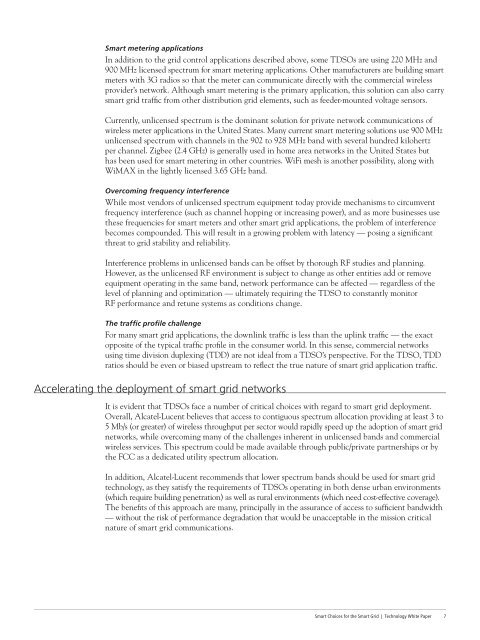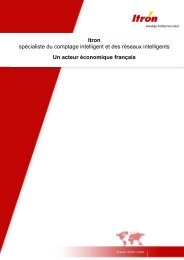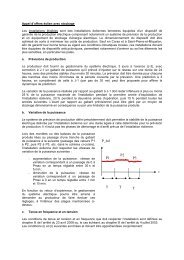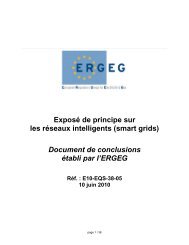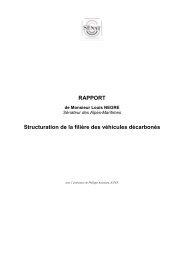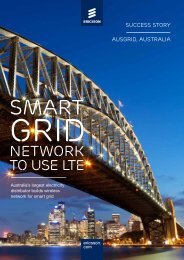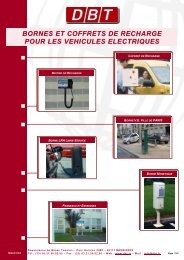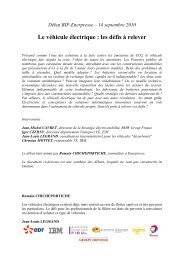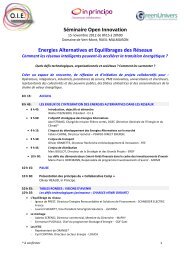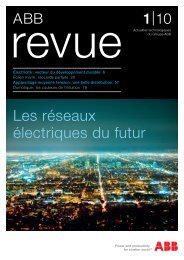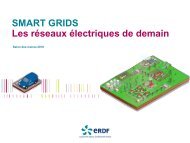Smart Choices for the Smart Grid - Smart Grids
Smart Choices for the Smart Grid - Smart Grids
Smart Choices for the Smart Grid - Smart Grids
Create successful ePaper yourself
Turn your PDF publications into a flip-book with our unique Google optimized e-Paper software.
<strong>Smart</strong> metering applications<br />
In addition to <strong>the</strong> grid control applications described above, some TDSOs are using 220 MHz and<br />
900 MHz licensed spectrum <strong>for</strong> smart metering applications. O<strong>the</strong>r manufacturers are building smart<br />
meters with 3G radios so that <strong>the</strong> meter can communicate directly with <strong>the</strong> commercial wireless<br />
provider’s network. Although smart metering is <strong>the</strong> primary application, this solution can also carry<br />
smart grid traffic from o<strong>the</strong>r distribution grid elements, such as feeder-mounted voltage sensors.<br />
Currently, unlicensed spectrum is <strong>the</strong> dominant solution <strong>for</strong> private network communications of<br />
wireless meter applications in <strong>the</strong> United States. Many current smart metering solutions use 900 MHz<br />
unlicensed spectrum with channels in <strong>the</strong> 902 to 928 MHz band with several hundred kilohertz<br />
per channel. Zigbee (2.4 GHz) is generally used in home area networks in <strong>the</strong> United States but<br />
has been used <strong>for</strong> smart metering in o<strong>the</strong>r countries. WiFi mesh is ano<strong>the</strong>r possibility, along with<br />
WiMAX in <strong>the</strong> lightly licensed 3.65 GHz band.<br />
Overcoming frequency interference<br />
While most vendors of unlicensed spectrum equipment today provide mechanisms to circumvent<br />
frequency interference (such as channel hopping or increasing power), and as more businesses use<br />
<strong>the</strong>se frequencies <strong>for</strong> smart meters and o<strong>the</strong>r smart grid applications, <strong>the</strong> problem of interference<br />
becomes compounded. This will result in a growing problem with latency — posing a significant<br />
threat to grid stability and reliability.<br />
Interference problems in unlicensed bands can be offset by thorough RF studies and planning.<br />
However, as <strong>the</strong> unlicensed RF environment is subject to change as o<strong>the</strong>r entities add or remove<br />
equipment operating in <strong>the</strong> same band, network per<strong>for</strong>mance can be affected — regardless of <strong>the</strong><br />
level of planning and optimization — ultimately requiring <strong>the</strong> TDSO to constantly monitor<br />
RF per<strong>for</strong>mance and retune systems as conditions change.<br />
The traffic profile challenge<br />
For many smart grid applications, <strong>the</strong> downlink traffic is less than <strong>the</strong> uplink traffic — <strong>the</strong> exact<br />
opposite of <strong>the</strong> typical traffic profile in <strong>the</strong> consumer world. In this sense, commercial networks<br />
using time division duplexing (TDD) are not ideal from a TDSO’s perspective. For <strong>the</strong> TDSO, TDD<br />
ratios should be even or biased upstream to reflect <strong>the</strong> true nature of smart grid application traffic.<br />
Accelerating <strong>the</strong> deployment of smart grid networks<br />
It is evident that TDSOs face a number of critical choices with regard to smart grid deployment.<br />
Overall, Alcatel-Lucent believes that access to contiguous spectrum allocation providing at least 3 to<br />
5 Mb/s (or greater) of wireless throughput per sector would rapidly speed up <strong>the</strong> adoption of smart grid<br />
networks, while overcoming many of <strong>the</strong> challenges inherent in unlicensed bands and commercial<br />
wireless services. This spectrum could be made available through public/private partnerships or by<br />
<strong>the</strong> FCC as a dedicated utility spectrum allocation.<br />
In addition, Alcatel-Lucent recommends that lower spectrum bands should be used <strong>for</strong> smart grid<br />
technology, as <strong>the</strong>y satisfy <strong>the</strong> requirements of TDSOs operating in both dense urban environments<br />
(which require building penetration) as well as rural environments (which need cost-effective cov erage).<br />
The benefits of this approach are many, principally in <strong>the</strong> assurance of access to sufficient bandwidth<br />
— without <strong>the</strong> risk of per<strong>for</strong>mance degradation that would be unacceptable in <strong>the</strong> mission critical<br />
nature of smart grid communications.<br />
<strong>Smart</strong> <strong>Choices</strong> <strong>for</strong> <strong>the</strong> <strong>Smart</strong> <strong>Grid</strong> | Technology White Paper 7


